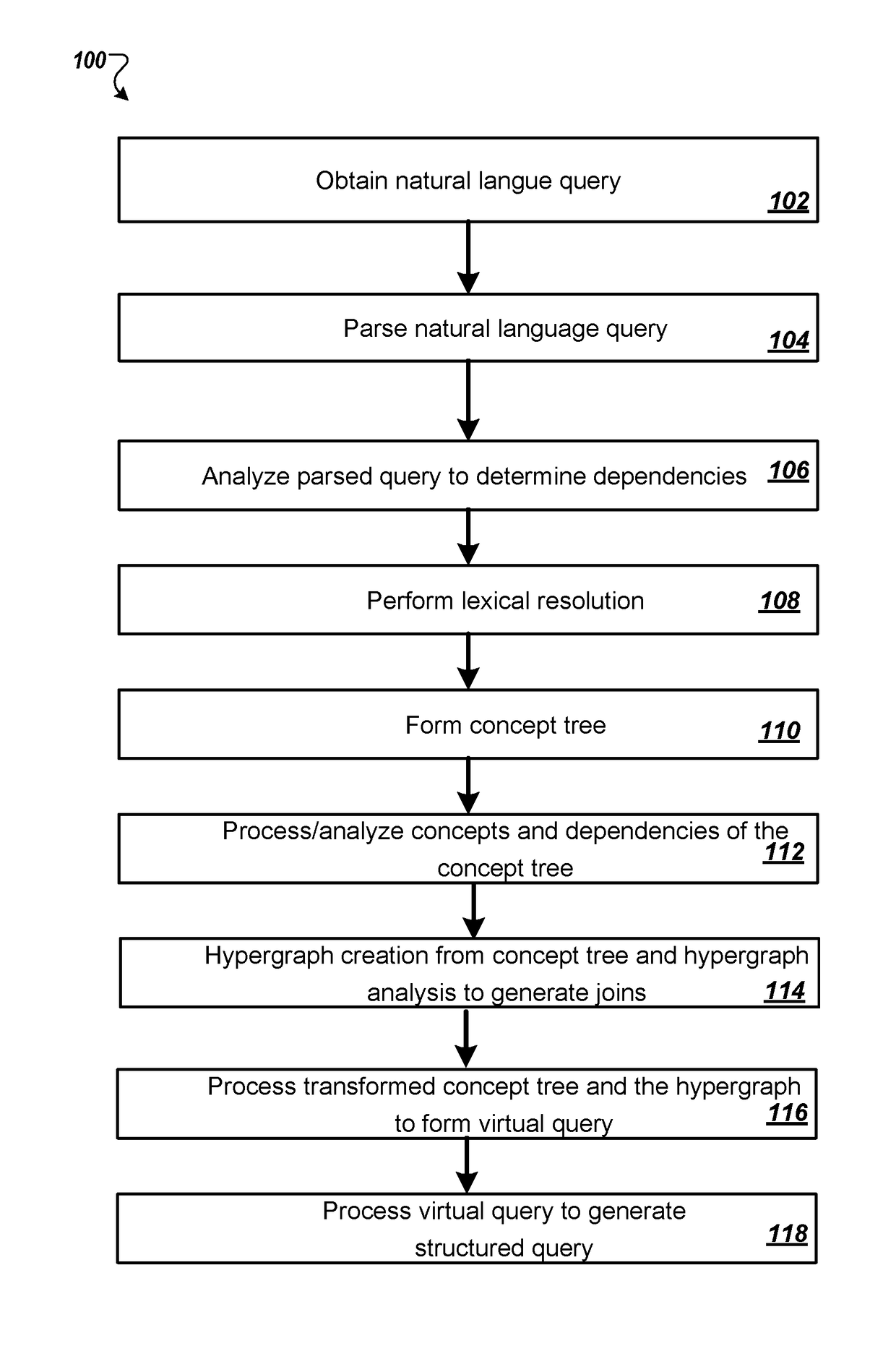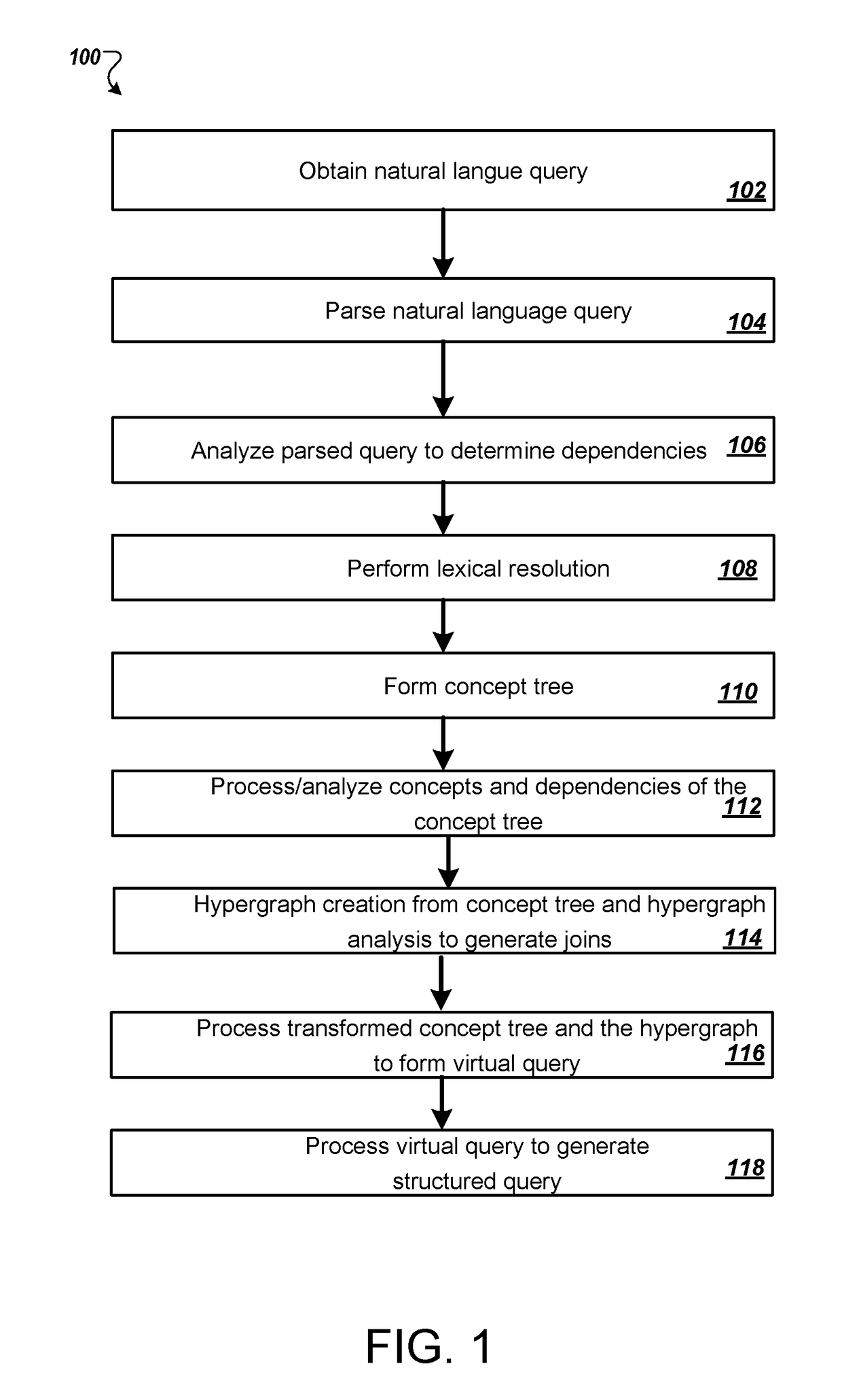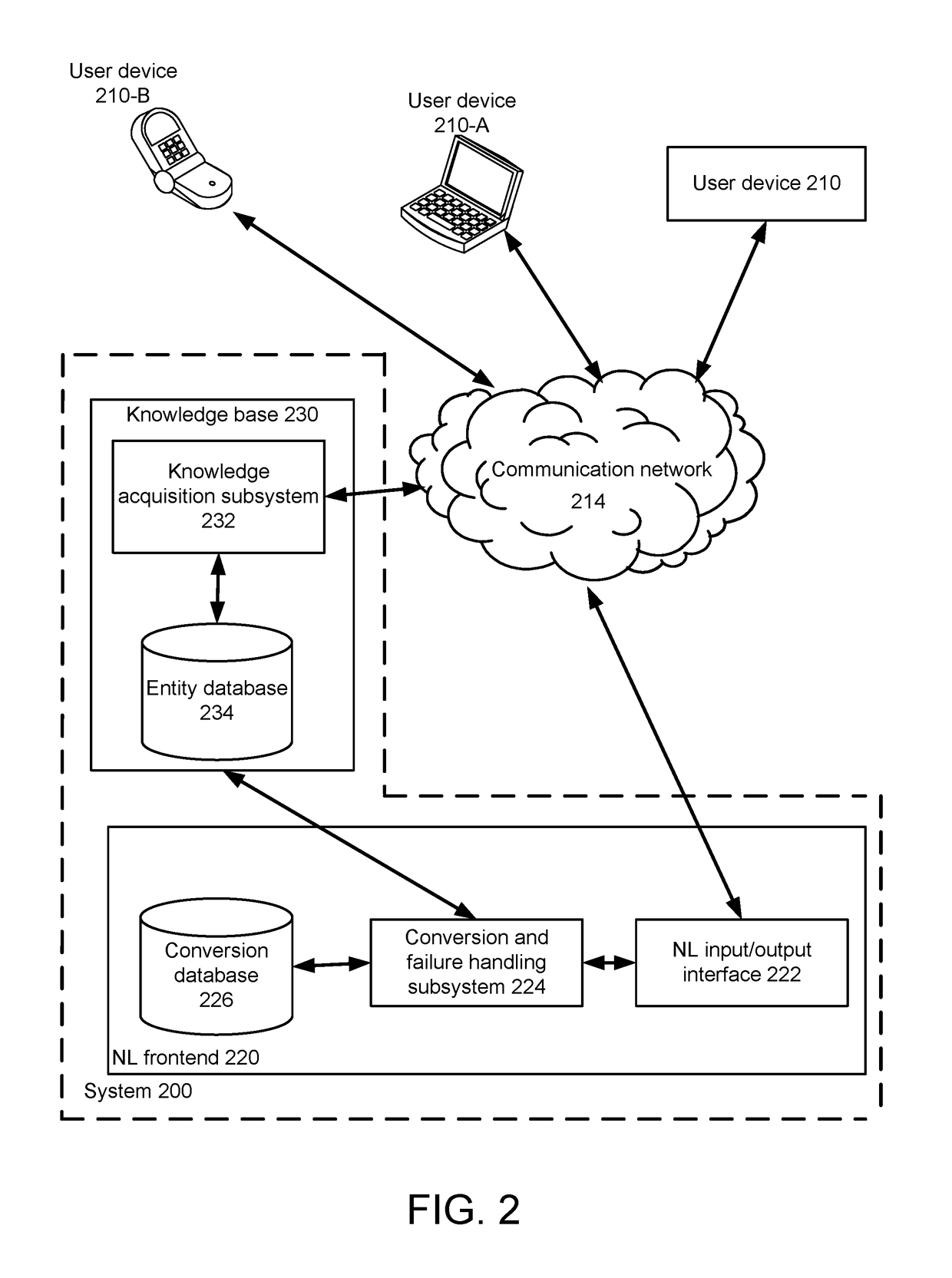Handling failures in processing natural language queries
a technology of natural language queries and failures, applied in the field of handling to achieve the effect of avoiding unnecessary iterations, reducing the effort to handle failures in processing natural language queries, and avoiding unnecessary iterations
- Summary
- Abstract
- Description
- Claims
- Application Information
AI Technical Summary
Benefits of technology
Problems solved by technology
Method used
Image
Examples
Embodiment Construction
[0023]Overview
[0024]Users can provide queries using natural language, for example, a free form English text string. A system can convert the received natural language queries into structured queries, for example, structured query language (“SQL”) queries. The structured queries can be executed and responsive data can be returned for output. For example, in response to a query the converted structured query can be used to obtain data responsive to the query, which can then be returned to the user.
[0025]The system may not always be able to successfully convert a given natural language query into a structured query. In particular, the natural language query can include errors made by the user including typos, malformed sentences, or missing keywords. The system also may be unable to convert the natural language query due to limitations of the system in recognizing particular sentence formations.
[0026]A process of converting a natural language query into a structured query can undergo a...
PUM
 Login to View More
Login to View More Abstract
Description
Claims
Application Information
 Login to View More
Login to View More - R&D
- Intellectual Property
- Life Sciences
- Materials
- Tech Scout
- Unparalleled Data Quality
- Higher Quality Content
- 60% Fewer Hallucinations
Browse by: Latest US Patents, China's latest patents, Technical Efficacy Thesaurus, Application Domain, Technology Topic, Popular Technical Reports.
© 2025 PatSnap. All rights reserved.Legal|Privacy policy|Modern Slavery Act Transparency Statement|Sitemap|About US| Contact US: help@patsnap.com



